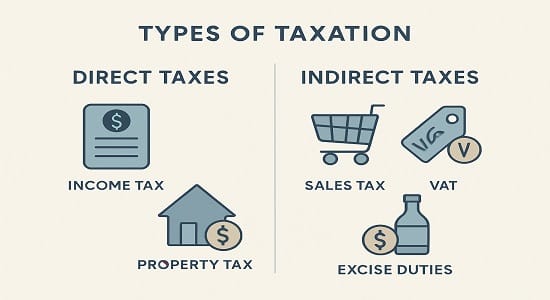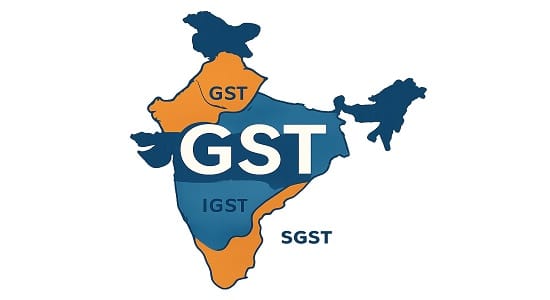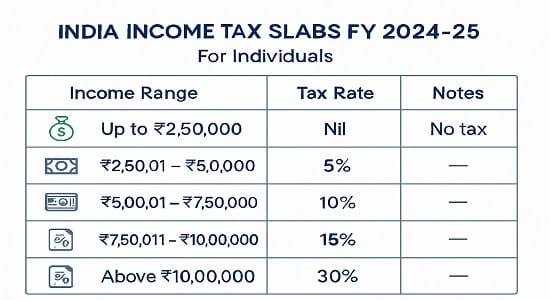Taxation in India: A Beginner’s Guide for Retail Investors
Taxation in India can be over whelming, particularly for a new comer. Whether you are a salaried employee, owner of a small business, or retail investor in shares in the stock market, knowing the ins and outs of taxation is the key to improved financial planning. This blog demystifies taxation in India with plain language, illustrations, and tables to enable you to make informed money choices in future.
What is Taxation in India?
Indian taxation is the method by which the government raises funds from citizens and corporations in order to finance public services, infrastructure, and welfare programs. Taxation in India are generally classified as Direct Taxes and Indirect Taxes.

Types of Taxation in India
Direct Taxes
These are remitted directly to the government by businesses and people of India
- Income Tax – Remitted by individuals from their salary, interest, or business income.
- Corporate Tax – Remitted by companies on their profit.
- Capital Gains Tax – Remitted on gains from selling shares, property, or mutual funds.

These are gathered by middlemen (such as stores or providers of services) and transferred to the state Government.
- Goods and Services Tax (GST) – On goods and services that we bought.
- Customs Duty – Duty on imports/exports of Goods.
Income Tax Slabs in India (FY 2024–25)

Here are the proposed income tax slabs under new tax regime for FY 2025-26 (AY 2026-27)
| Income Range (₹) | Tax Rate |
|---|---|
| From 0 to 4,00,000 | Nil |
| From 4,00,001 to 8,00,000 | 5% |
| From 8,00,001 to 12,00,000 | 10% |
| From 12,00,001 to 16,00,000 | 15% |
| From 16,00,001 to 20,00,000 | 20% |
| From 20,00,001 to 24,00,000 | 25% |
| From 24,00,001 and above | 30% |
Capital Gains Tax for Investors
Capital gains apply when you sell assets like shares, property, or mutual funds.
| Type of Asset | Holding Period for LTCG | Tax Rate |
|---|---|---|
| Equity Shares Equity Mutual Funds | > 1 year | 12.5% (above ₹1.25 lakh gains) |
| Equity Shares Equity Mutual Funds | ≤ 1 year | 20% (STCG) |
| Real Estate | > 2 years | 20% with indexation |
| Real Estate | ≤ 2 years | As per income tax slab |
Why Understanding Taxation in India is Important for Retail Investors
- Assists in making the correct investment decisions (debt or equity).
- Facilitates tax savings through accurate planning.
- Prevents penalties for non-adherence.
- Enhances net returns from investments.
Key Tax-Saving Options (Popular Sections)
- Section 80C – Maximum of ₹1.5 lakh (PPF, ELSS, Life Insurance, EPF, etc.)
- Section 80D – Deduction on medical insurance premium.
- Section 24(b) – Deduction on home loan interest.
- NPS Tax Benefit – Additional ₹50,000 under Section 80CCD(1B).
Frequently Asked Questions (FAQs)
Q1. Do I need to pay tax on gains in the stock market?
- Yes. 20% tax for short-term gains and 12.5% tax for long-term gains (over ₹1.25 lakh).
Q2. Old or New tax regime is preferable
- If you have lots of deductions (80C, 80D, housing loan), the Old regime will work for you. Otherwise, the lower rates of the New regime might be preferable.
Q3. Is income from dividends taxable?
- Yes. Dividend is taxed according to your income slab under the new system.
Q4. How can beginners save tax legally?
- Utilize 80C investments, health insurance under 80D, and NPS for extra saving
Conclusion
India’s taxation can seem daunting, but if you know the fundamentals – direct and indirect taxation, income tax slabs, and capital gains tax – it is quite manageable. For individual investors, judicious tax planning not only keeps you out of trouble but also assists in maximizing the returns. Whether you invest in mutual funds, shares, or real estate, having taxation at the back of your mind while investing is the secret to generating wealth in the long run. Don’t forget, taxation is not only a responsibility, it’s a means to give back to India’s growth story.

Disclaimer: This blog is for educational purposes only. The securities or companies mentioned are examples, not recommendations. It does not constitute investment advice. Please conduct your own research before making any investment decisions

You could definitely see your skills in the work you write. The world hopes for even more passionate writers like you who are not afraid to say how they believe. Always follow your heart.
I like this site because so much useful material on here : D.
great post, very informative. I wonder why the other experts of this sector don’t notice this. You should continue your writing. I am sure, you’ve a huge readers’ base already!
Rattling fantastic visual appeal on this site, I’d value it 10 10.
Hey! I simply wish to give an enormous thumbs up for the good information you might have right here on this post. I will probably be coming back to your weblog for extra soon.
You have observed very interesting details! ps nice internet site.
What’s Going down i’m new to this, I stumbled upon this I have discovered It positively helpful and it has aided me out loads. I am hoping to contribute & aid other users like its aided me. Good job.
I love foregathering useful information , this post has got me even more info! .